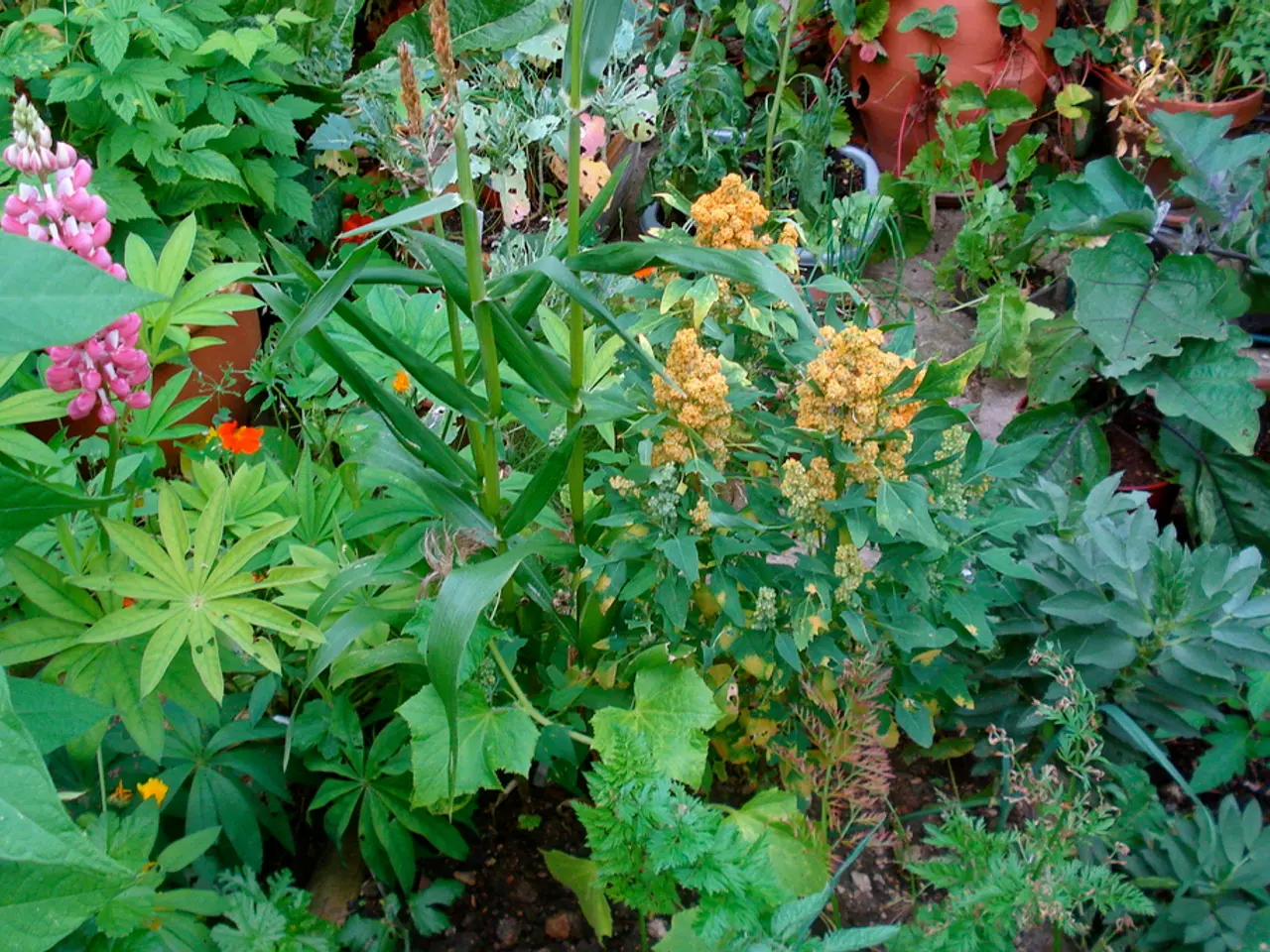A cloistered oasis unlike any other: explores the extraordinary garden at Knepp Castle prior to Monty Don's broadcast
In the heart of Sussex, the Knepp Castle Estate, a pioneering rewilding project in the UK, is demonstrating how to harmoniously blend biodiversity and aesthetic appeal in a rewilded landscape.
The estate, originally consisting of an ornamental kitchen garden and a swimming pool garden, underwent a significant transformation to increase biodiversity and create various habitats. This redesign was spearheaded by renowned landscape architect Tom Stuart-Smith, with Charlie Harpur, a young landscape architect in his studio, playing a key role in the project's execution.
One of the key strategies employed at Knepp is the introduction of large herbivores such as fallow and red deer, wild horses, long-horn cattle, and pigs. These animals help control vegetation, creating a diverse patchwork of habitats that support a wide range of wildlife. The result has been significant increases in floristic diversity, insect abundance, and sightings of rare species like the Purple Emperor butterfly and nightingales.
The estate operates with minimal human intervention, allowing natural processes to dominate the landscape. Fields are left to revert to natural vegetation, which fosters biodiversity. This approach creates a dynamic, ever-changing landscape that is both wild and beautiful, offering a unique aesthetic experience for visitors.
Efforts have also been made to restore natural ecosystems, including the reintroduction of beavers to restore wet grassland and wetland habitats. These ecosystems support a broader range of species, including amphibians and aquatic life.
Ecological surveys and monitoring are conducted regularly to understand the impact of rewilding on biodiversity. While these efforts do not directly contribute to aesthetic appeal, they ensure that biodiversity goals are met while maintaining an attractive landscape through natural processes.
The Knepp farm, spanning 3,500 acres, has been withdrawn from conventional land management for over 20 years. The Kitchen Garden, a more accessible route to garden rewilding, features a tapestry of sea lavender, lady's bedstraw, and toadflax, among others. The once-neat pieces of yew topiary by the glasshouse have been 'goat-pruned' into eccentrically random forms, and gravel paths have been allowed to go 'dirty' with encroaching self-seeded plants, blurring the boundaries of the beds.
Charlie Harpur is now creating a 188-square metre model garden to showcase plant combinations suitable for a domestic garden. He conducts regular 'safaris' within the Rewilded Garden to explain the rewilding process and its benefits. Experts in plant ecology, organic herbs, and gardening, such as James Hitchmough, Mick Crawley, and Jekka McVicar, were brought in to help with the redesign.
The Knepp Castle garden, set within 19th-century walls, was previously managed with traditional formality and lacked diversity. However, under the new rewilding approach, it now features areas of flat, exposed topsoil, dry peaks, damp troughs, and sunny, south-facing slopes, each suitable for specific plant communities.
By combining these strategies, the Knepp Castle Estate effectively balances biodiversity and aesthetic appeal, showcasing a model for rewilding that can be applied to other landscapes.
- The estate's transformation, originally a combination of an ornamental kitchen garden and a swimming pool garden, now showcases a harmonious blend of biodiversity and aesthetic appeal in the context of rewilding.
- Large herbivores, such as fallow and red deer, wild horses, long-horn cattle, and pigs, assist in controlling vegetation, thereby creating a diverse patchwork of habitats that support a wide range of plants and wildlife.
- The estate's strategy of minimal human intervention and allowing natural processes to dominate the landscape results in a wild yet beautiful, ever-changing, and dynamic landscape that offers a unique aesthetic experience.
- Ecological surveys and monitoring conducted regularly at the estate ensure that the rewilding efforts maintain biodiversity while creating an attractive landscape through natural processes, contributing to environmental science and sustainable living.
- Charlie Harpur, playing a key role in the project's execution, is now creating a model garden to demonstrate suitable plant combinations for a domestic garden, integrating the principles of rewilding into home-and-garden lifestyle.
- The Knepp Castle garden, once managed traditionally with formality and lacking diversity, now reflects various topographical conditions suitable for specific plant communities, demonstrating the potential of rewilding in bettering garden landscapes.




